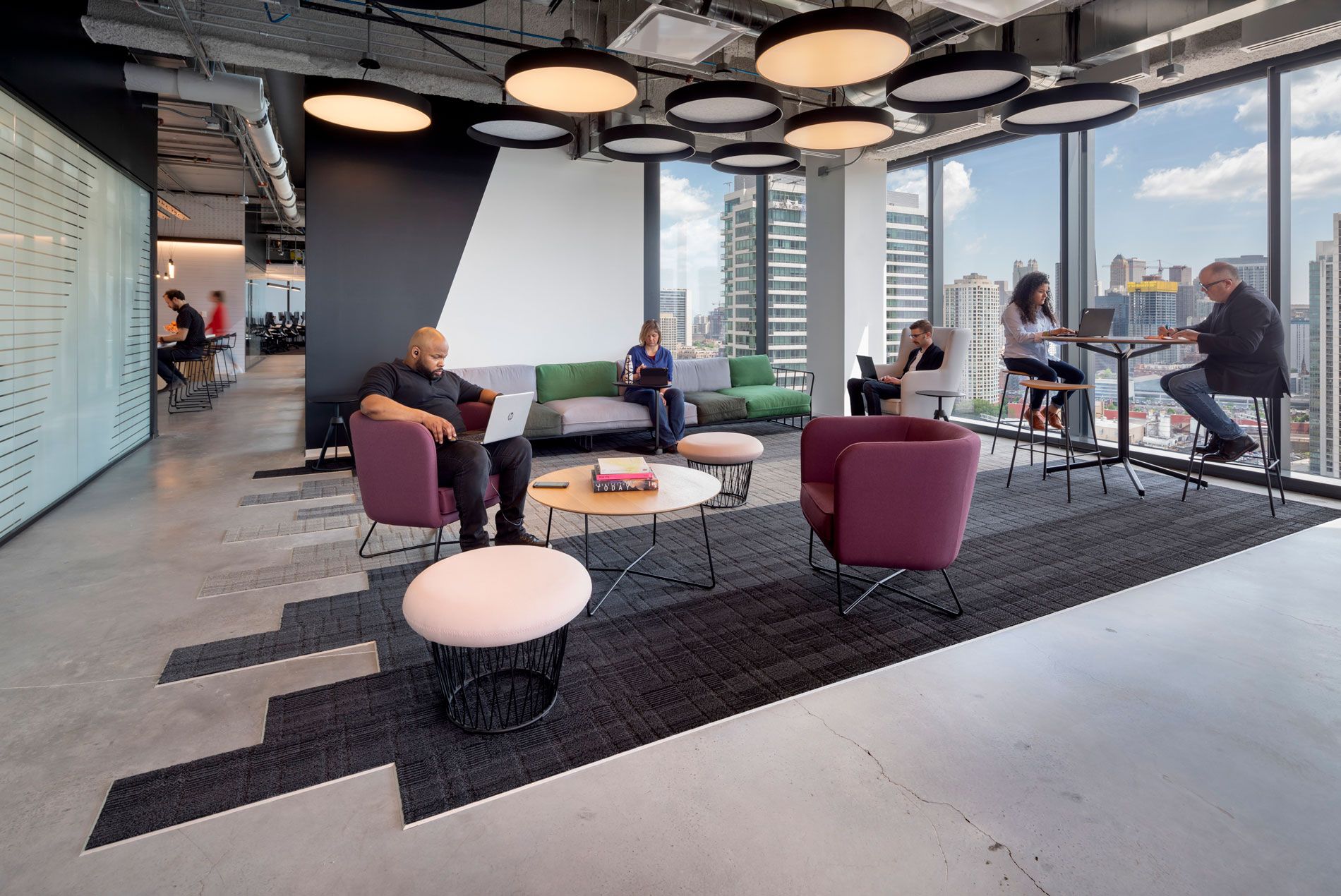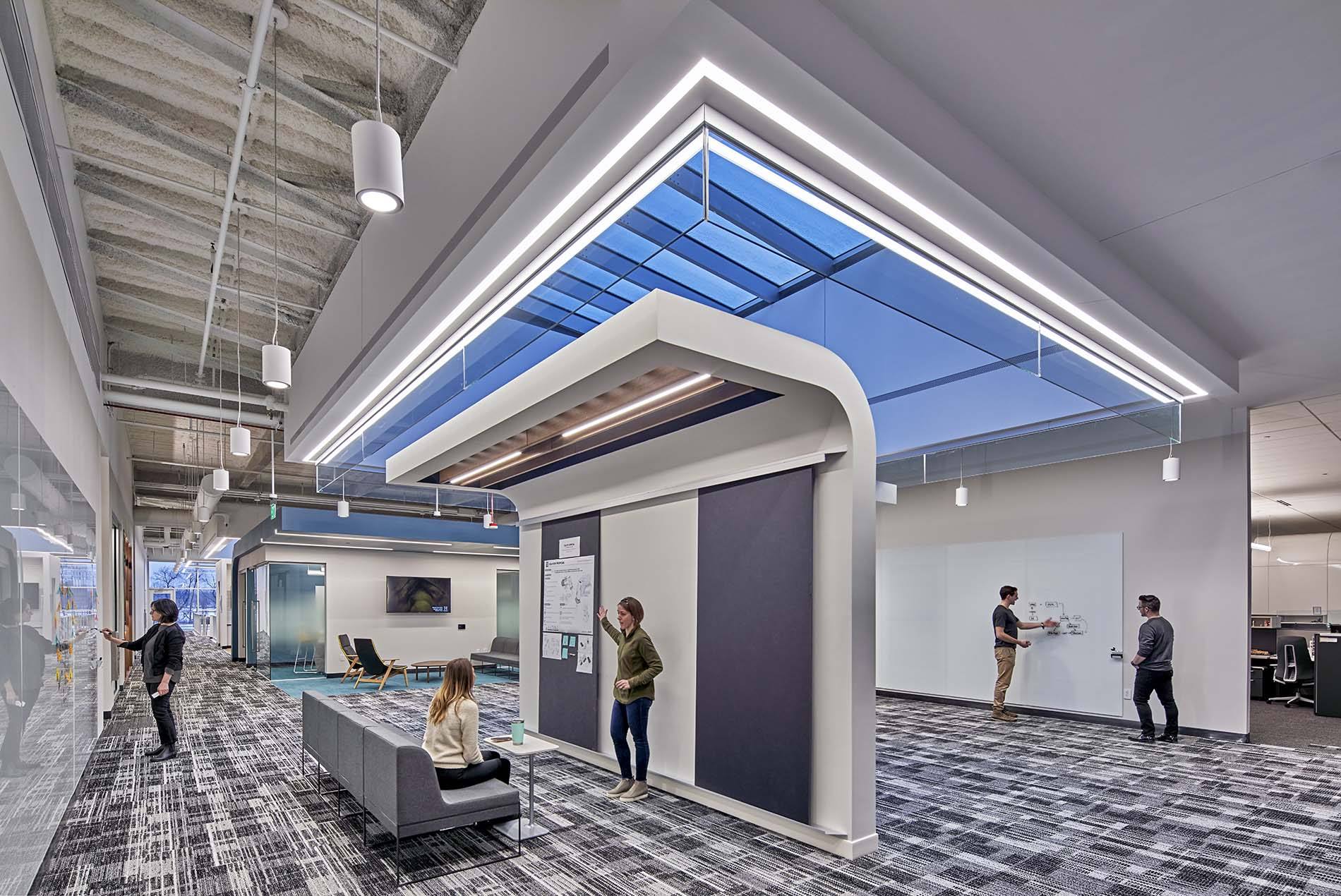HOK workplace and interior design experts Kay Sargent and Tom Polucci share how the hybrid office is evolving in the era of artificial intelligence, Gen Z and the metaverse.
Watch the discussion on the evolving workplace (above), or skip down for 4 big takeaways.
1. AI: Job Killer or Job Enabler?
The emergence of ChatGPT and other artificial intelligence tools in 2023 have many people worrying about losing their jobs. But don’t sound the doomsday alarm yet, said Sargent.
“For years, we’ve been using smart technology to improve building operations,” said Sargent. “Now, we’re thinking about how technology can enhance the individual experience. I’m excited about AI simplifying many tasks and allowing us to focus on what’s important.”
As for job losses, Sargent noted that manufacturing automation led to layoffs in some sectors but also established new fields in engineering and robotics. “Every time we eliminate one type of job, we create others. It’s about understanding how and where things are shifting.”
2. Metaverse Meets Workplace
The metaverse is a hot topic as the tech behind digital twins and alternative realities becomes more widespread. For example, might physical offices be wholly replaced by virtual workplaces?
Not likely, said Polucci, who sees the metaverse as another space type for employees to interact. “We’ve been talking about these types of spaces since the early aughts with the emergence of Second Life. Creating such virtual spaces for people to connect could improve some aspects of the office, particularly when it comes to equity. We can create these neutral spaces where everyone is on equal footing.”

The office offers younger workers social connections and opportunities for in-person training.
3. Generation Z 💗 The Office
Younger workers don’t value the office as much as their older colleagues, right?
Wrong.
“Younger generations benefit the most from being together and having in-person experiences, such as mentoring, establishing connections and building social capital,” said Sargent.
“When asked if they’d be OK with getting rid of the office, 77% of Gen Z respondents said no. They value being together in the same space. They just don’t necessarily want to do it five days a week.”
To accommodate these workers and make the office “worth the commute,” companies are creating gathering spaces that foster collaboration and connections. These spaces need to be amenity-rich and flexible—not just a conference room with a video monitor and the largest table you can shove into the room, warned Sargent.
“Think of these spaces as more like theater stages that can flex and adjust for different uses,” said Sargent. “We need to be intentional about how these spaces can enable people to function at a higher level and connect.”
4. Office Policies Before Design
The old design maxim “form follows function” takes on added relevance today as businesses continue adjusting their hybrid and remote work policies. Without established policies, the office won’t perform as well as it could.
“We are having more and more conversations with clients about their workplace policies and operations,” said Polucci. “If there is no alignment inside the organization on how and where people work, then the design solutions aren’t going to work either.”
